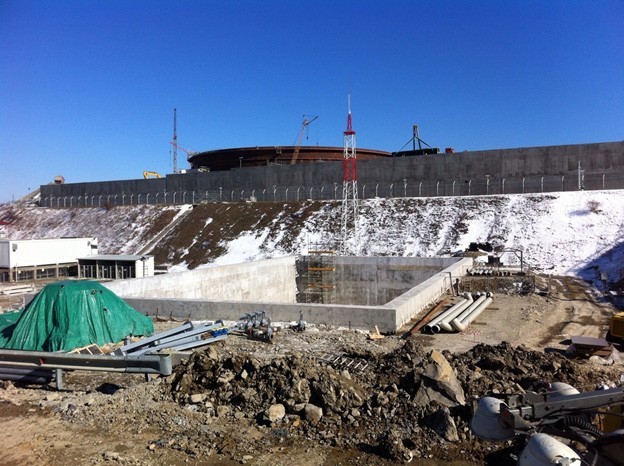Successful tests of the new pumping stations added to the massive Caspian Pipeline – completed May 2018 – will increase throughput of the crude oil pipeline connecting the oil fields of Kazakhstan with the world market. PENETRON technology was used extensively during the construction of the original pipeline and the ongoing upgrade projects – to maximize the durability of the concrete elements in the valve wells.
Construction of the Caspian Pipeline Consortium (CPC) began in 1992 by the Russian, Kazakhstani and Omani governments (and a number of private shareholders) to develop and build an oil pipeline from Kazakhstan to export routes in the Black Sea. The pipeline was the largest international oil transportation project in the world, at 1,510 km (940 miles) long. It was built for transporting crude oil from the Tengiz, West Kazakhstan (and some Russian producers in the region), around the Caspian Sea and across Southern Russia, to the CPC terminal in Yuzhnaya Ozereevka (Novorossiysk) on the Black Sea, where the crude oil is loaded on tankers for export to the world markets.
Construction of the original pipeline began in 1999 and was completed in 2001. By 2004, the CPC was operating at full capacity. Over the past 12 years, ongoing improvements and upgrade projects have successively increased capacity of the pipeline. The current expansion project, when fully functional, will almost double throughput of crude oil to the Black Sea. The Stavropol Krai (PS-5) pump station was commissioned only a few months ago, the second of two pump stations planned under the latest CPC expansion project. These new oil pumping stations are complex power and control systems that will help increase both capacity and safety along the Caspian Sea section of the CPC pipeline.
Prompt Delivery of Waterproofing Materials
“Thanks to a comprehensive regional network of construction experts and Penetron dealers in Kazakhstan and Southern Russia, Penetron has been part of the CPC since the beginning,” notes Igor Chernogolov, President of Penetron Russia. “Also, the proximity of the new Penetron factory in Kazakhstan helped Penetron Kazakhstan guarantee prompt delivery of all crystalline materials to the construction sites.”
A range of Penetron materials were used to waterproof the valve wells along the Kazakhstan and Russian parts of the pipeline. For example, PENETRON was used to treat over 6,000 m2 (66,000 square feet) of concrete at the Russian pumping station and waterproof two km (1.2 miles) of construction joints with PENEBAR SW waterstop.
Providing On-Site Technical Support
At the CPC terminal in Novorossiysk on the Black Sea, crude oil storage capacity was also increased by up to 28 million tons a year. Two concrete reservoirs to collect rainwater were treated with PENETRON topical material and PENECRETE MORTAR to ensure that no oil residues from the accumulated water would flow into the Black Sea.
“The local Penetron teams across the region were able to work seamlessly with the CPC, a multi-national consortium, to provide consistent technical support and an effective design mix with both topical integral crystalline applications,” says Igor Chernogolov.

Waterproofed tanks: The concrete rainwater reservoirs were treated with PENETRON material and PENECRETE MORTAR to ensure no oil residues from the accumulated water would flow into the Black Sea.

Secured by PENETRON: The newly constructed oil pumping stations are complex power and control systems that increase both capacity and safety along the 1,510 km (940 miles) Caspian Sea pipeline.

